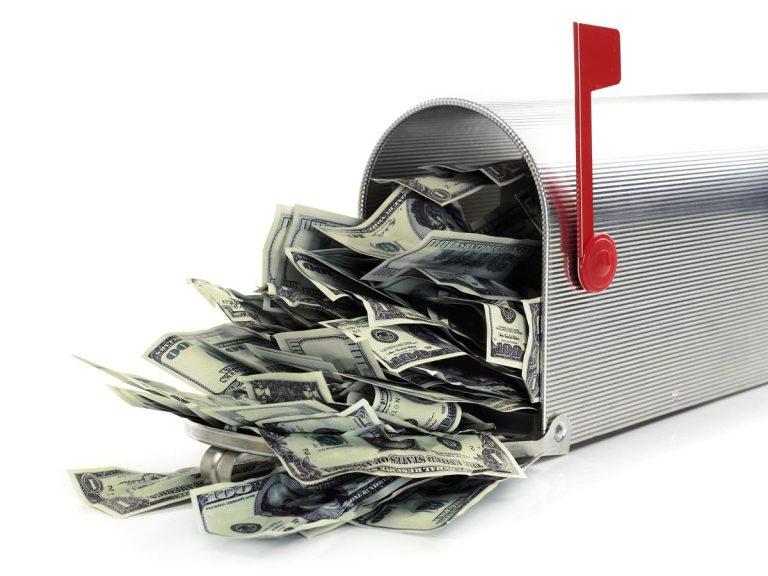Let’s go ahead and build ourselves an “instant” income portfolio throwing off a rich 8.8% yield. A yield like that, after all, could put a dividends-only retirement within our reach. Or at the very least help you scale back your day job and make up the difference with dividend payouts.
This, of course, is the essence of financial freedom, and my favorite high-yield assets, closed-end funds (CEFs), are our best play here. When we build our retirement with CEFs, we get to hold the top stocks, bonds and other assets, like publicly traded real estate investment trusts (REITs), out there. But with a twist: we get a big slice of our return in dividends thanks to these funds’ sky-high yields of 8%+.
And it’s easy: CEFs trade on the public markets, just like stocks, so you can buy and sell them anytime during regular trading hours.
How We’ll Build a Livable Income Stream on Just $568,182
To show you what I mean, let’s build a quick, diversified portfolio of three CEFs yielding 8.8% on average: one that holds stocks, one that invests in bonds and one that holds REITs.
Before we talk about these three funds, let’s linger on this fascinating bit of math. When we have a portfolio that yields 8.8%, suddenly we can get $50,000 (a bit over $4,000 per month) in passive income with just $568,182 invested. That is, of course, a lot less than the $1.25 million needed to get the same income stream on a 4% yield.
And even 4% is hard to get through a lot of the funds; the largest ETF for US stocks, the SPDR S&P 500 ETF Trust (SPY
PY
SPY
Clearly, choosing higher-yielding funds gets us an income stream we can rely on—provided the funds we choose avoid dividend cuts.
For Stock Investing, Think A-S-G, Not S-P-Y
First up: stocks, which we’re going to invest in through the Liberty All-Star Growth Fund (ASG), a CEF with a 100% US-stock portfolio that overlaps significantly with the NASDAQ
NDAQ
With nearly 200% returns and 22.2% dividend growth over the last decade, this 8.3%-paying fund has not disappointed, keeping its high payments high (and moving them higher) so retirees can rely on this fund for $691 a month in income for every $100k invested. In a decade, that’ll probably be more like $843 a month.
Two other things to bear in mind with this one: first, its dividend does float around a bit, because ASG’s stated policy is to pay 8% of its net asset value (NAV, or the value of its underlying portfolio) as dividends every year. And the stocks in its portfolio—mid- and large-cap names like Visa
V
MSFT
CWST
Then there’s the discount to NAV, the main indicator of CEF value: right now, ASG trades at a 4.7% discount, so we’re basically getting its holdings for 95 cents on the dollar.
Let’s Collect 8.3% in “Rent” Without the Landlord Hassles
Now let’s be the landlord with the Cohen & Steers Quality Income Realty Fund (RQI), an 8.3% yielder that also boasts a strong track record. RQI focuses on REITs that have a variety of assets, from apartment buildings to data centers and beyond.
Keeping payouts steady over that period, RQI has also impressed with a surprise special dividend in late 2020 to boost payouts further (that dip in 2019 was another special dividend, on top of RQI’s regular payout). The topper here is that, with a 5.4% discount to NAV, we are, as with ASG, getting this one for 95 cents on the dollar.
A 10.3% Payout From the Best Bond Firm in the Business
Finally, our bond fund, the PIMCO Corporate & Income Strategy Fund (PCN), holds bonds issued by companies you’re familiar with (American Airlines, Barclays, CVS, Carnival Corporation), and a lot of firms you might not know much about (Prime Healthcare Services, Topaz Solar Farms, Vale SA, and so on). The result is a portfolio of hundreds of bonds that pays out a whopping 10.3% on average.
Of course, double-digit yields are rare and much sought-after, but we income seekers know they can also be unsustainable. PCN’s payout is not; the fund has held its payout steady for five years and has issued special dividends in the past to boost its payout even further.
To be sure, the thing that is eye-popping here is PCN’s premium: as I write, it trades at a 28% premium to NAV. In other words, investors are paying $1.28 for every dollar of PCN’s assets. That’s high by any measure, but we should note that PIMCO’s funds always trade at premiums, and often big ones, because the company is a legendary brand in the CEF business.
Still, we shouldn’t pay any price for a PIMCO fund. If you’re interested in starting a CEF portfolio, I’d suggest taking a close look at our two other picks first and then waiting for a while—ideally until PCN’s premium drops to around 19%, which is its five-year average, before buying in.
When we put these three funds together, we get a reliable 8.8% average income stream. A yield like that would deliver $1,000 a month for every $136,364 invested.
An income stream like this, it’s worth pointing out, is an indication of how multi-millionaires really live: they don’t just get a paycheck from an employer; they get multiple income streams from multiple companies that have borrowed money from them or that they own an interest in. Plus they usually have physical assets like homes, factories and buildings they rent out for some monthly cash, too.
These three funds do the same thing, and they get you an 8.8% income stream to boot. That’s not easily done, even if you’re Warren Buffett.
Michael Foster is the Lead Research Analyst for Contrarian Outlook. For more great income ideas, click here for our latest report “Indestructible Income: 5 Bargain Funds with Steady 10.4% Dividends.”
Disclosure: none
Read the full article here









